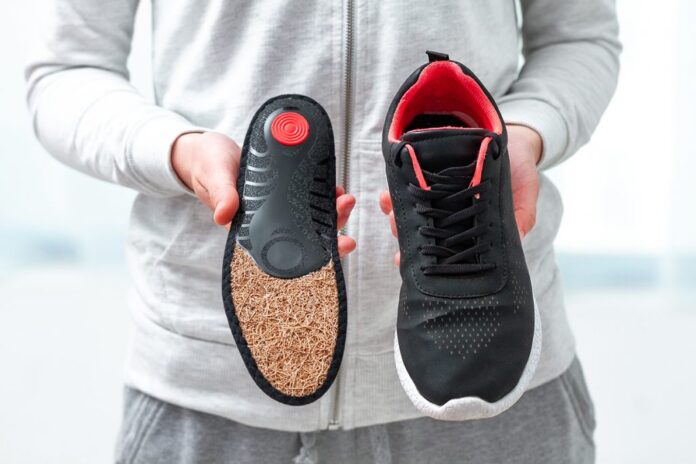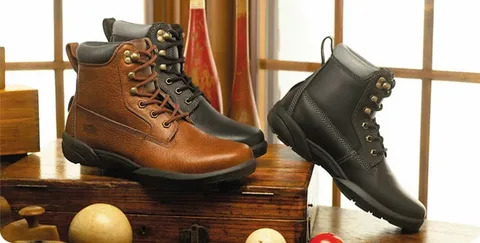Do you have diabetes? If so, wearing Diabetic Steel Toe Shoes is essential for your safety and well-being. Not only do these shoes provide superior protection, but they also help to reduce the risk of diabetic foot complications. In this blog post, we’ll discuss why diabetic steel-toe shoes are so important and how they can keep your feet safe. With the right diabetic steel-toe shoes, you can enjoy the confidence of knowing that you’re protected from potential harm.
What Are Diabetic Steel-Toe Shoes?
Diabetic steel-toe shoes are specially designed footwear that provides protection and support for individuals with diabetes. These shoes have a steel toe cap, which helps to safeguard your feet from heavy objects and potential accidents.
What sets diabetic steel-toe shoes apart from regular steel-toe shoes is their focus on diabetic foot care. These shoes are engineered to minimize pressure and friction on the feet, reducing the risk of ulcers, blisters, and other foot complications. They are usually made with soft, breathable materials that promote airflow and prevent moisture buildup, helping to keep your feet dry and comfortable.
Additionally, diabetic steel-toe shoes often feature cushioning and arch support, which can alleviate foot pain and provide additional comfort for those with diabetic neuropathy or other foot conditions.
These shoes are not only a necessity for those working in high-risk environments, but they are also beneficial for everyday activities. Whether on the job or simply going about your day-to-day tasks, wearing diabetic steel-toe shoes can give you the peace of mind of knowing your feet are protected.
Investing in diabetic steel-toe shoes is a proactive step towards maintaining foot health and preventing potential injuries.
Why Are They Important For Those With Diabetes?
For those with diabetes, wearing diabetic steel-toe shoes is incredibly important for several reasons. First and foremost, these shoes provide crucial protection for your feet. As a person with diabetes, you may have decreased foot sensitivity due to peripheral neuropathy, making it difficult to feel pain or notice injuries. Diabetic steel-toe shoes offer a sturdy steel cap that can prevent serious injuries from heavy objects or accidents.
Additionally, diabetic steel-toe shoes are designed with diabetic foot care in mind. They are constructed to reduce pressure and friction on the feet, which can help prevent the development of ulcers, blisters, and other foot complications. These shoes are often made with soft, breathable materials that promote airflow and prevent moisture buildup, keeping your feet dry and comfortable.
Moreover, diabetic steel-toe shoes typically offer cushioning and arch support, which can alleviate foot pain and provide additional comfort for those with diabetic neuropathy or other foot conditions.
The Dangers Of Foot Injuries For Diabetics In The Workplace
The workplace can be a hazardous environment, especially for those with diabetes. Foot injuries are a significant concern for people with diabetes, as they can lead to serious complications and long-term consequences. Foot injuries are one of the leading causes of hospitalization among people with diabetes.
The dangers of foot injuries in the workplace are amplified for people with diabetes due to several factors. Firstly, individuals with diabetes may have decreased foot sensation, making it difficult to detect injuries or ulcers. A small cut or blister can quickly become a severe infection if not properly addressed.
Furthermore, diabetes can cause poor circulation and nerve damage, making healing more difficult for wounds. A simple cut or abrasion that would normally heal quickly for someone without diabetes can become a persistent and problematic issue for people with diabetes.
Foot injuries can occur in the workplace from various hazards such as falling objects, heavy machinery, or sharp tools. Without proper protection, these injuries can lead to amputations, extended hospital stays, or even disability.
To mitigate these risks, people with diabetes must wear diabetic steel-toe shoes in the workplace. These shoes protect from potential hazards while focusing on diabetic foot care. The steel toe cap protects against impact, while the soft and breathable materials reduce pressure and friction, minimizing the risk of ulcers and blisters.
Benefits of Wearing Shoes For Diabetic Patients
Living with diabetes comes with its own set of challenges, but finding the right footwear shouldn’t be one of them. Regarding protecting your feet, diabetic steel-toe shoes offer a range of benefits for patients with diabetes.
One of the key benefits of wearing Shoes For Diabetic Patients is their superior protection. The steel toe cap safeguards your feet from heavy objects and potential accidents, giving you peace of mind in high-risk environments. Whether working in a warehouse or construction site, these shoes are designed to keep you safe.
But protection is not the only advantage of diabetic steel-toe shoes. These shoes are also engineered to minimize pressure and friction on the feet, reducing the risk of ulcers, blisters, and other foot complications. The soft, breathable materials promote airflow and prevent moisture buildup, keeping your feet dry and comfortable throughout the day.
In addition to foot protection and care, diabetic steel-toe shoes often offer cushioning and arch support. This extra comfort is especially beneficial for those with diabetic neuropathy or other foot conditions, relieving foot pain.
Choosing The Right Diabetic Steel Toe Shoe
Choosing the right diabetic steel toe shoe is essential for ensuring your comfort, safety, and overall foot health. With so many options on the market, it’s important to consider a few key factors before deciding.
First and foremost, prioritize the fit of the shoe. Proper fit is crucial for diabetic individuals, as ill-fitting shoes can cause pressure points, rubbing, and discomfort, leading to foot complications. Look for shoes that offer a wide toe box to accommodate any swelling or foot deformities that may occur with diabetes.
Next, consider the material of the shoe. Opt for shoes made from soft, breathable materials that promote airflow and prevent moisture buildup. These features can help prevent fungal infections and keep your feet dry and comfortable throughout the day.
Additionally, look for shoes with cushioning and arch support. These features can alleviate foot pain and provide extra comfort for those with diabetic neuropathy or other foot conditions. Remember, the more comfortable your shoes are, the more likely you will wear them consistently.
Preventing Infection: The Antimicrobial Properties of Diabetic Steel-Toe Shoes
Diabetic steel-toe shoes not only provide protection and comfort for your feet, but they also offer an added benefit: antimicrobial properties. These shoes are designed with materials that inhibit the growth of bacteria and fungi, helping to prevent infections.
Foot infections can be a serious concern for individuals with diabetes. The combination of reduced sensitivity and poor foot circulation can make healing more difficult for wounds, increasing the risk of infections. That is why the antimicrobial properties of diabetic steel-toe shoes are so important.
By wearing these shoes, you can have peace of mind knowing that your feet are protected from potential injuries and harmful microorganisms. The antimicrobial properties help to reduce the risk of infections, keeping your feet healthy and safe.
The materials used in diabetic steel-toe shoes are often breathable and moisture-wicking, which further helps to prevent the growth of bacteria and fungi. These shoes create an unfavourable environment for microbial growth, reducing the likelihood of infections.
Choosing the Right Diabetic Shoe Store
When finding the perfect diabetic steel-toe shoes, choosing the right store is just as important as choosing the right pair. So, how do you select the best Diabetic Shoe Store for your needs? Here are a few key factors to consider.
First and foremost, look for a store that specializes in diabetic footwear. These stores often have a wide selection of diabetic steel-toe shoes, ensuring you have plenty of options. Additionally, they know the unique needs of individuals with diabetes and can provide expert advice and guidance.
Next, consider the reputation of the store. Read reviews and testimonials from other customers to get a sense of their experience with the store. Look for a store with a positive reputation for quality products and excellent customer service.
It’s also important to consider the store’s return policy. Since finding the right pair of diabetic steel-toe shoes can be a process of trial and error, it’s crucial to have the option to return or exchange your shoes if they don’t meet your needs. Look for a store that offers a generous return policy, preferably with free returns.
FAQS
1. Can I wear diabetic steel-toe shoes if I don’t work in a high-risk environment?
Absolutely! While diabetic steel-toe shoes are essential for those working in hazardous environments, they are also beneficial for everyday activities. Whether running errands, walking, or engaging in other daily tasks, diabetic steel-toe shoes can provide the protection and comfort your feet need.
2. Are diabetic steel-toe shoes covered by insurance?
It depends on your insurance policy and coverage. Some insurance plans may cover the cost of diabetic shoes, including diabetic steel-toe shoes if they are deemed medically necessary. It’s best to check with your insurance provider for coverage details and requirements.
3. How often should I replace my diabetic steel-toe shoes?
The lifespan of diabetic steel-toe shoes can vary depending on factors such as frequency of use, workplace conditions, and individual foot conditions. As a general guideline, it’s recommended to replace diabetic shoes every 6 to 12 months or sooner if they show signs of wear and tear. Regularly inspect your shoes for any signs of damage, including worn-out soles, loose seams, or decreased cushioning.
4. Can I wear orthotics or custom insoles with diabetic steel-toe shoes?
Many diabetic steel-toe shoes are designed to accommodate orthotics or custom insoles. However, choosing shoes with a removable insole or providing enough depth to accommodate additional inserts is essential. This way, you can customize your footwear to address specific foot conditions or needs.
Conclusion
Diabetic steel-toe shoes are a must-have for anyone with diabetes. These shoes offer superior protection, reduce the risk of foot complications, and provide comfort for individuals with diabetic neuropathy or other foot conditions. Whether working in a high-risk environment or simply going about daily activities, diabetic steel-toe shoes prioritize your safety and well-being. Don’t wait another second – invest in diabetic steel-toe shoes and prioritize your foot health today!



